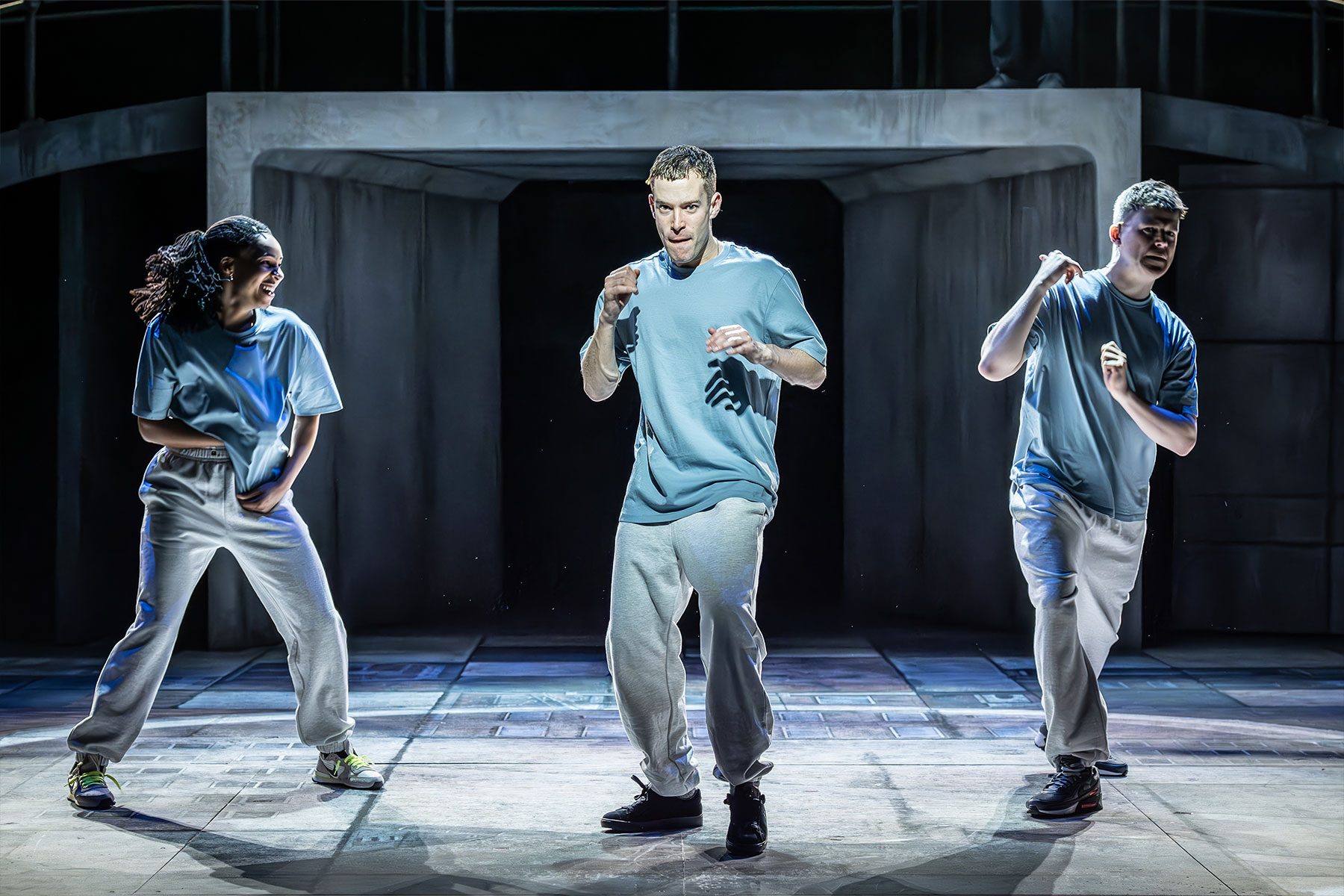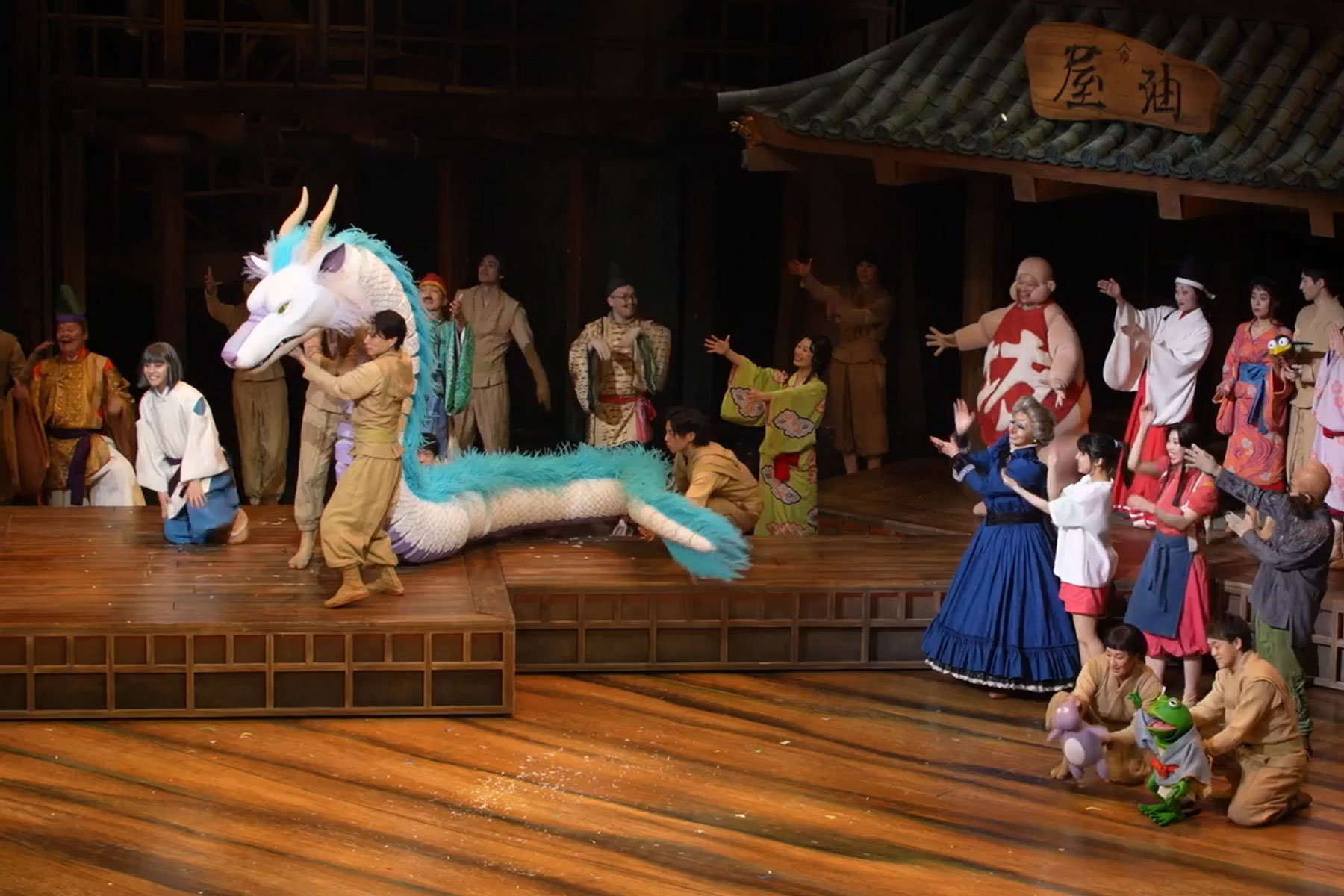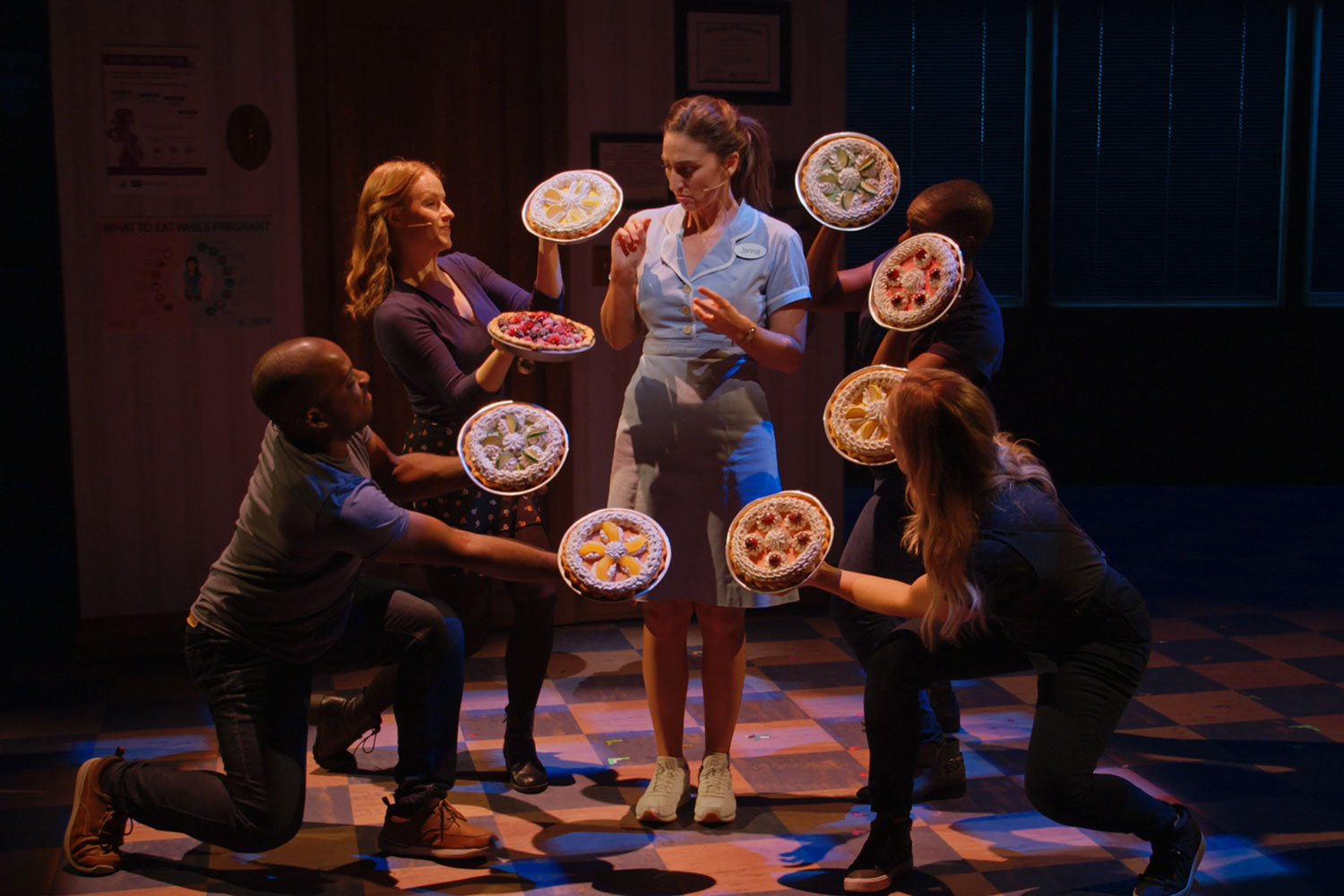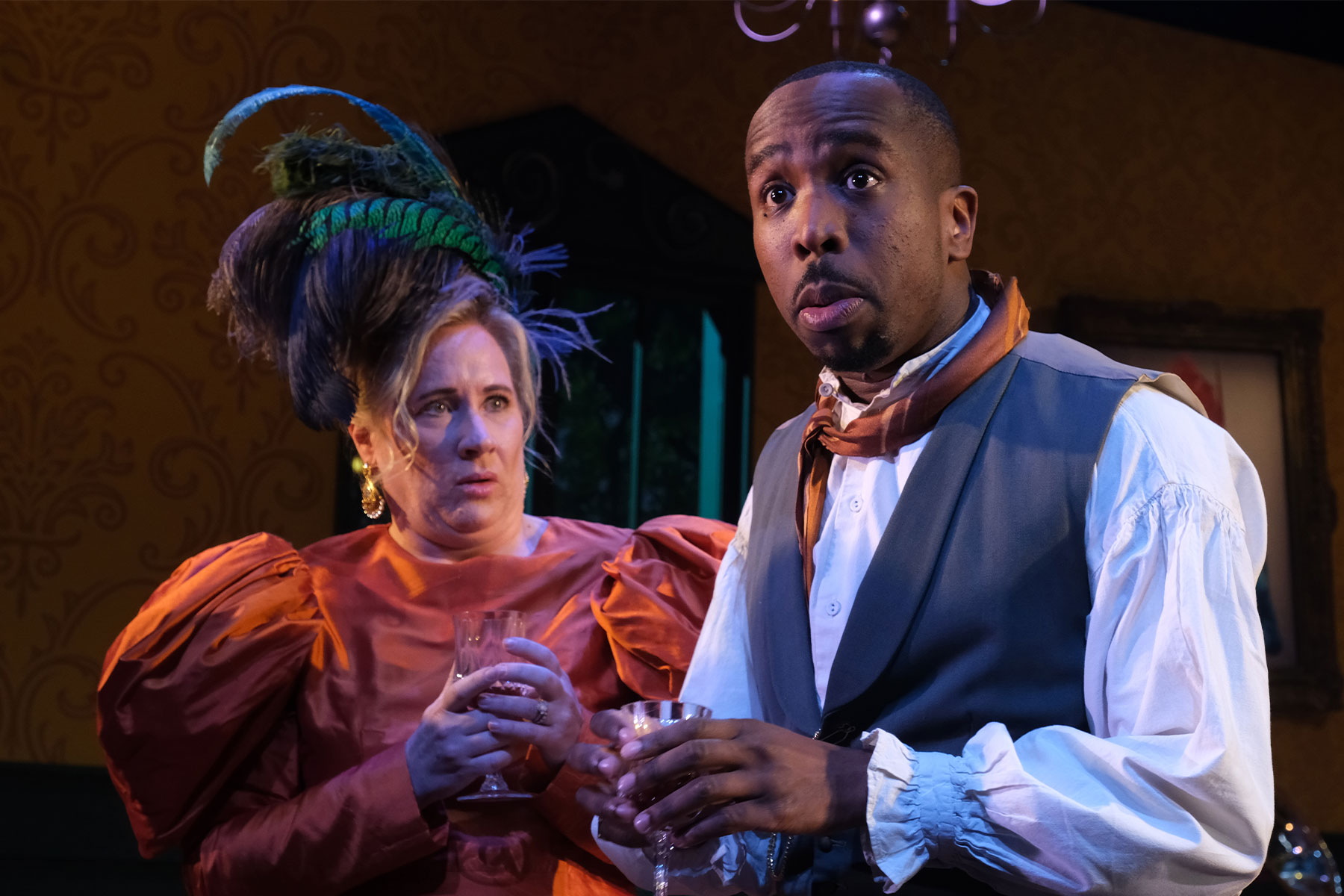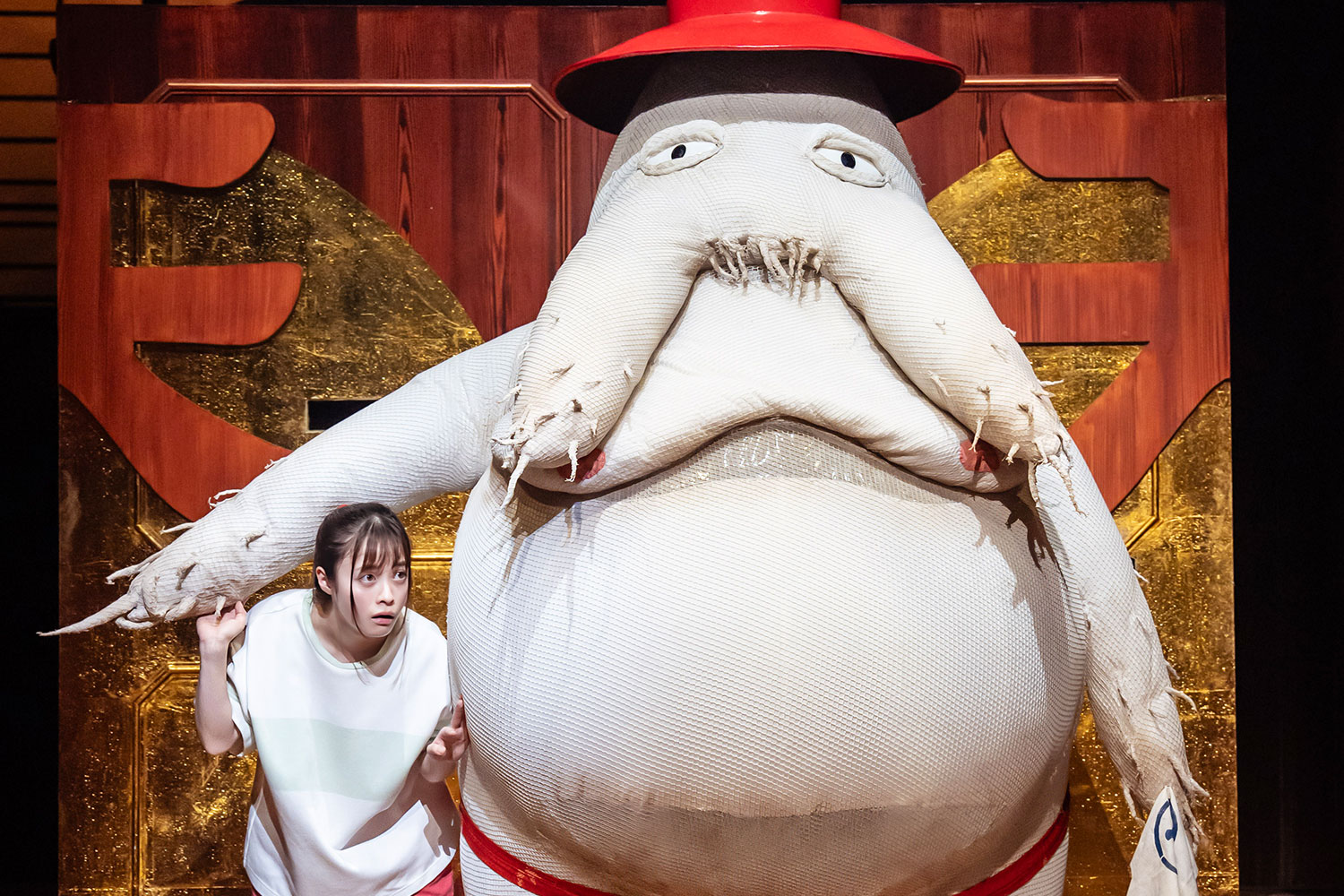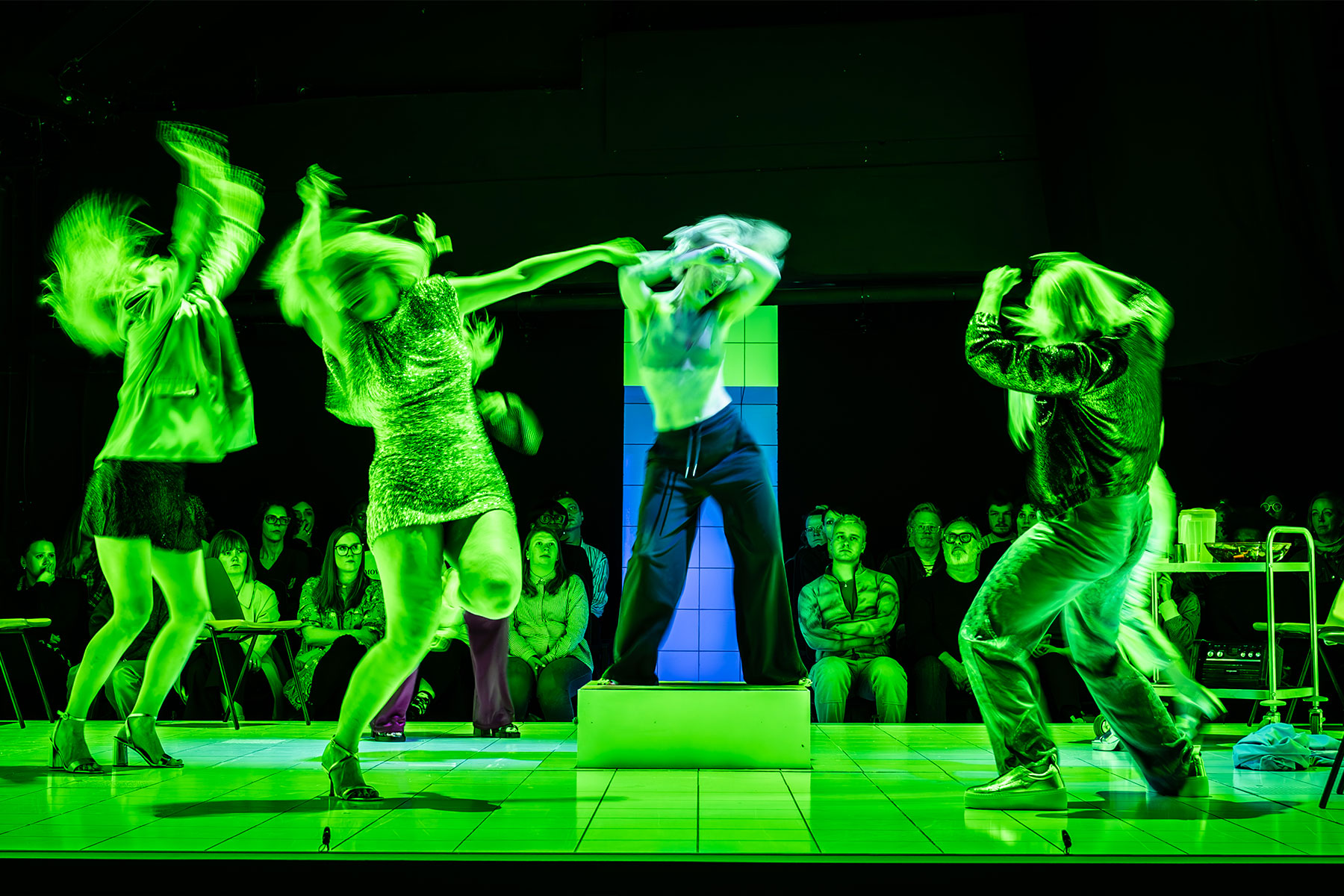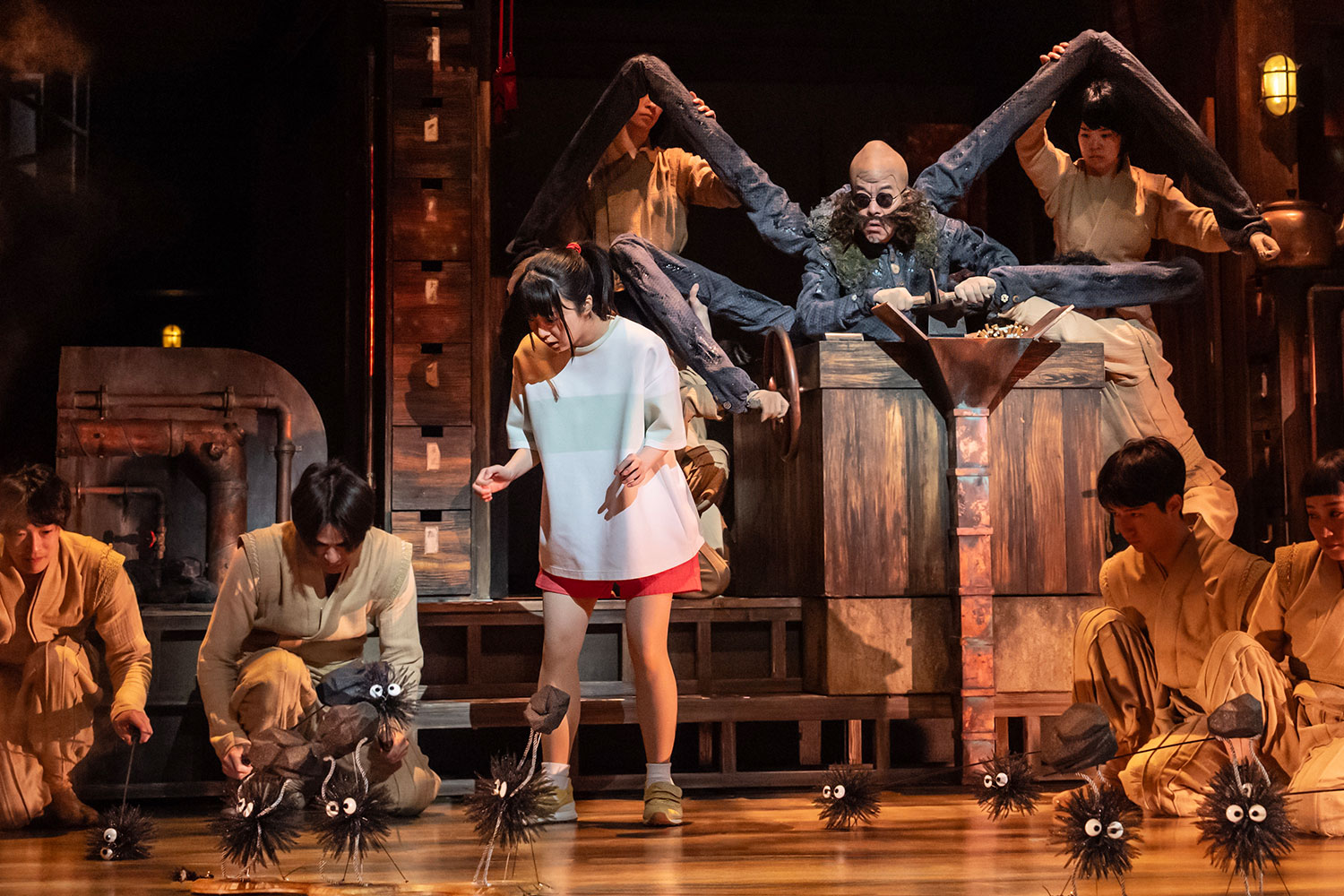Patience
Gilbert and Sullivan’s Patience (1881) is sandwiched, chronologically, between the two far superior operettas that Sasha Regan has already transformed in her all-male company treatment, The Pirates of Penzance and Iolanthe.
Still, Patience has its highlights and some funny and intricate lyrics taking the rise out of Oscar Wilde’s aesthetic movement.
The dairymaid of the title – sung with lisping charm and demure sincerity by Edward Charles Bernstone – is assailed by two poets: Reginald Bunthorne (Dominic Brewer) is hedonistic and fey, Archibald Grosvenor (Stiofan O’Doherty, an Irish Dominic Cooper lookalike) idyllic and true.
Bunthorne has charmed the 20 lovesick village maidens (ten chaps in knitted cardigans, short haircuts, short socks and floral dresses) and left their former suitors, a posse of dragoon guards, champing at the bit while declaring their undying devotion to the Queen.
The soldiers stalk the simpering lovelies, while Bunthorne is baited and offered up for a raffle (the lyrics rhyming “lottery” with “terra-cottery”) before sharing a lovely duet with the loyal but unattractive Lady Jane (nicely done by Sean Quigley).
Archibald, on the other hand, is “a magnet hung in a hardware shop,” and has a number called precisely that to prove it. Patience’s entanglement in her own sense of love being a duty, not a pleasure, is eventually undone by the discovery of her four-year-old sweetheart.
Although these Union G&S treats are fairly camp, they’re never cheap and tawdry, nor do they ever descend into drag act squawking. The boys are immaculately drilled and prepared, and it’s an endless source of fascination to hear Sullivan’s music set in relief, almost, by a pleasing variety of tenor, alto and fine falsetto voices.
Regan’s colleagues back this dedicated approach all the way. The work in all departments is a delight: Drew McOnie’s simple, frieze-like choreography, Kingsley Hall’s modern, attentive Victorian design, Steve Miller’s resourceful lighting and, especially, Richard Bates’ musical direction at the single grand piano.
Apart from the melodious lays (that’s the songs, not the boys), there’s a famous quintet and a jolly romping item in triple time, as well as one or two fine patter numbers and the finger-wagging, “So go to him, and say to him.” Everyone on the stage has a distinctive character, so the show retains its freshness and sharpness from start to finish.



